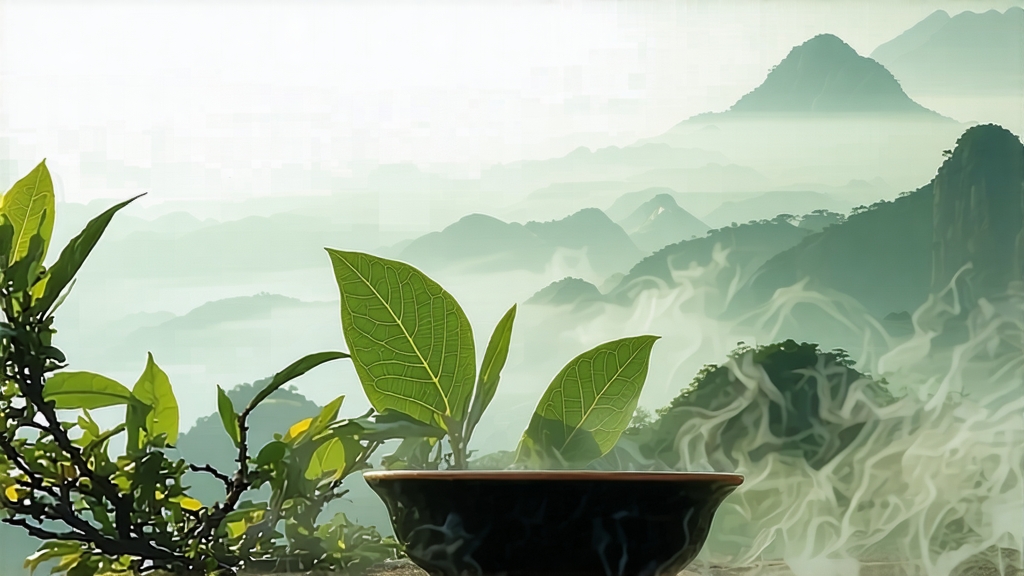
Tieguanyin, literally “Iron Goddess of Mercy,” is the most celebrated name within the oolong family, a tea that suspends itself between green freshness and black depth, capturing the Chinese ideal of harmony in a single cup. Though oolong is produced in half a dozen provinces, Tieguanyin remains the archetype that global tea lovers cite when they speak of “oolong,” and for good reason: its bouquet can recall orchids, roasted nuts, or even warm milk, while its liquor slides from pale jade to golden amber depending on season, craft, and age. To understand China’s tea imagination, one must spend time with this one leaf.
Historical whispers place Tieguanyin’s birth in the Yongzheng era (1723–1735) of the Qing dynasty, in Anxi county of southern Fujian. A devout farmer named Wei Yin is said to have tended a dilapidated temple housing the Bodhisattva Guanyin. One night the goddess appeared in a dream, pointing to a cave behind the altar where a single tea shrub thrived in creviced stone. Wei transplanted it to his field, and the tea he made from its leaves possessed an unprecedented fragrance. He named it after the iron statue of Guanyin he had polished back to life. A parallel legend credits the scholar Wang Shirang, who discovered the cultivar on Xiangyan Mountain and presented it to the Qianlong Emperor; the court’s delight secured its fame. Whether myth or marketing, both stories underscore the tea’s spiritual aura and the Fujianese talent for turning terroir into poetry.
Anxi county, cradled by the Daiyun mountain range and washed by subtropical mists, offers the perfect stage: granitic soils, sharp diurnal shifts, and a mean altitude of 600–800 m. Within Anxi, micro-zones such as Xianghua, Gande, and Longjuan have become crus in their own right, each imprinting subtle accents—Xianghua’s higher elevation yields a cooler, more floral cup, while Longjuan’s lower, warmer gardens give creamier textures. The original Hongxin (“red heart”) cultivar, with its bronze-tinted young leaves, is now joined by Waiwei, Lvbao, and Jinxuan, yet purists still chase the elusive “mother tree” stock, now reproduced by asexual cuttings to preserve genetic fidelity.
Crafting Tieguanyin is a choreography of stress and rest. Picking begins at dawn when two leaves and a bud are still taut with overnight dew. The pluckers’ baskets are shaded with wet cloth to prevent premature oxidation under the rising sun. Once in the factory, the leaves are spread thin under ceiling fans for withering, losing about 10 % moisture and entering the first olfactory transformation: grassy notes recede, revealing a scent akin to fresh cucumber and lily. Next comes yaoqing—“rocking the green”—a unique tossing in cylindrical bamboo drums that bruises leaf edges while keeping the veins intact. This partial rupture sets up the signature 30–50 % oxidation, lower than the 60–70 % of Wuyi rock oolongs but higher than the 20 % of Taiwanese Baozhong. The rhythm is critical: 3–5 minutes of tumbling followed by 30–40 minutes of rest, repeated up to six cycles through the night. Masters listen for a rustle that shifts from brittle to velvet, a sonic cue that oxidation has reached the “red edge, green center” ideal.
At dawn the leaves enter the kill-green stage, flash-heated in 230 °C drum roasters for less than three minutes to halt enzymes while locking in floral aromatics. Traditionally this was done over charcoal, but modern gas ovens offer finer temperature control. Rolling follows, first mechanically to break cell walls, then by hand on square cotton cloths: the leaves are wrapped into tight nuggets and twisted underfoot pressure, a step repeated dozens of times until the leaf adopts the iron-like pellet shape that inspired the “iron” in Tieguanyin. Finally, the tea is baked, either lightly at 70 °C for 30 minutes for the modern “qingxiang” (fresh aroma) style, or charcoal-baked for 8–12 hours at 50–60 °C for the classical “nongxiang” (rich aroma) style. Some lots are further aged in earthen jars for years, developing dried-longan and spice notes prized by Chaozhou gongfu aficionados.
The result is a spectrum of flavor that can disorient newcomers. Qingxiang